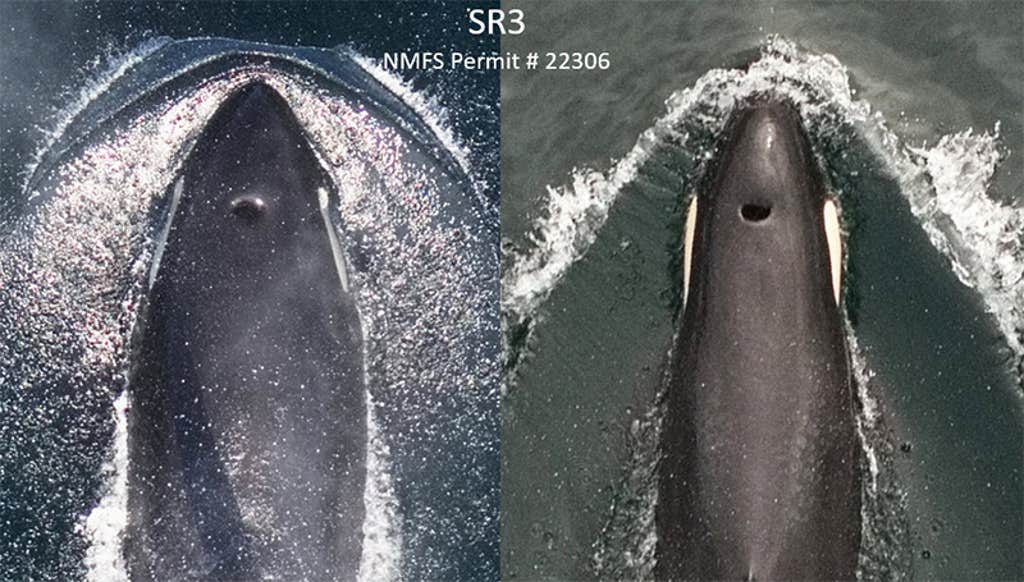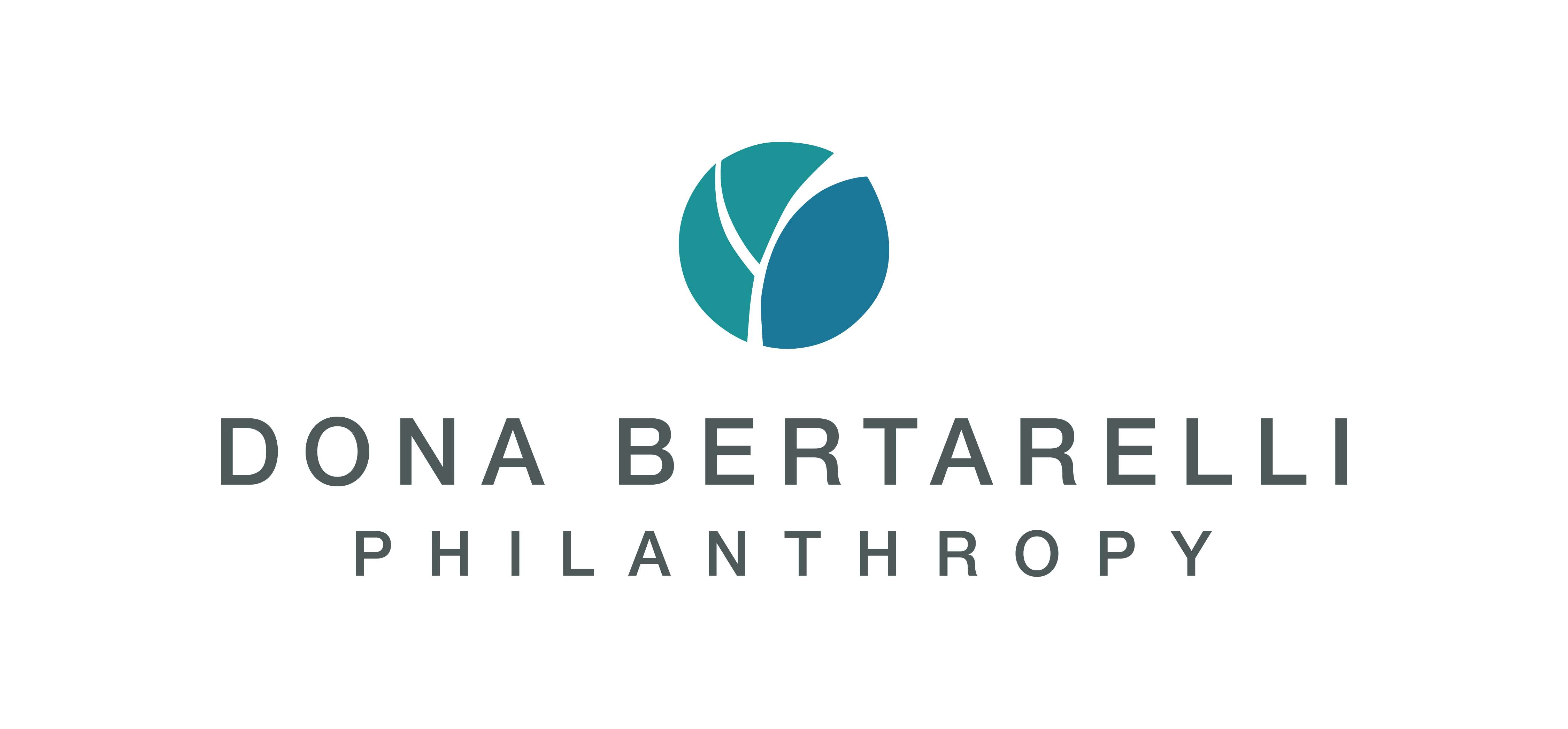A Long Time Ago
Washington State was once a place where people captured killer whales—also known as orcas—and sent them to marine parks all over the world. More than one-third of all Southern Residents, a population of killer whales who live off the Pacific Northwest coast, were taken in these captures. Sixty-eight Southern Residents remained in the wild. When federal courts put an end to killer whale captures in 1976, the people of Washington thought they had Saved the Whales.
Belonging
There are three pods in the Southern Resident community: J, K, and L pods. Within each pod are families—grandmothers, mothers, offspring, and grand offspring. These families stay together for decades. For life.
Chinook
In faded jeans and a blue anorak, killer whale researcher John Ford maneuvers the red and yellow boat Squamish, while Graeme Ellis, his longtime friend and colleague, leans over the bow holding a long-handled fine-mesh dip net. The kind used to skim fall leaves out of a swimming pool. It’s the 1990s, and a group of killer whales has just finished feeding. Ellis makes a pass with the net and collects the fish scales and fish bits left on the water’s surface and winking in the glare.
Ford and Ellis return to the Pacific Biological Field Station on Vancouver Island to see what they have. What they found was not what they expected. Almost all the samples were from Chinook salmon.
What scientists call genetically and culturally distinct, simply means irreplaceable.
Chinook. King. Blackmouth. Spring. Tule. Tyee. Quinnat. Oncorhynchus tshawytscha. All names for the same iconic fish, the grandest and richest of the Pacific salmon species. An adult Chinook’s shiny chrome body is as large and muscular as a lumberjack’s thigh; large enough to hang out either side of a killer whale’s mouth, and large enough for the whales to share.
All Chinook? This couldn’t be right, thought Ford and Ellis. There must have been some bias in their collection. So they refined their technique and went out again. And again. But every time they went out, their samples came back as Chinook. They even collected samples when the sea was thick with sockeye or pink salmon, but the whales swam past these schools and favored Chinook. This discovery—first published in 1998—would become the crux of the Southern Residents’ story.
Distinct Beings
The Southern Residents are different from all other populations of killer whales. They are what scientists call genetically and culturally distinct. What does this mean? It means that even though they look like other killer whales, they don’t breed with them—not even with Bigg’s killer whales, who share the Southern Residents’ Pacific Northwest habitat but feed on marine mammals, not fish. It means they have their own culture: learned behaviors passed from generation to generation. They have their own vocal repertoire: calls and whistles, collectively known as their dialect, that sound like dialogue. They have their own diet. They have their own social behaviors, their own movement patterns, and their own way of taking care of one another. What scientists call genetically and culturally distinct, simply means irreplaceable.
Edge of Extinction
When the captures ended, the wild Southern Residents grew to 98 individuals strong. But by the late 1990s their numbers took a downward turn. John Ford looked to Chinook for clues.
He compared Pacific Chinook abundance with the numbers of births and deaths in the killer whale population. The bar graphs fit together like an M.C. Escher tessellation. When Chinook abundance was down, killer whale mortality was up. When Chinook abundance was up, killer whale mortality was down—and the number of births was up. In other words, the survival of the Southern Resident killer whales is dependent on the abundance of Chinook salmon.
It was 14 years ago when Ford and his colleagues published this work. Now, his red hair and bushy red beard are mostly gray, he has retired from his position as head of the Cetacean Research Program at Fisheries and Oceans Canada’s Pacific Biological Station, and the Southern Resident killer whales are at risk of extinction.
Food
Whenever you hear about the Southern Residents, you’ll hear about three threats: lack of prey, boat disturbance, and toxic contamination from “forever chemicals” such as PCBs. Like the Father, the Son, and the Holy Spirit, the three are almost always mentioned in unison and they do not work in isolation. However, thinking of them as a trinity downplays the most important threat—lack of prey.
In 2018, biologist Sam Wasser, executive director and founder of the University of Washington’s Center for Environmental Forensic Science, and five other scientists wrote to Washington State Governor Jay Inslee that the Southern Residents need more Chinook salmon “as quickly as possible.” Urging the Governor to breach dams in the Columbia River Basin to restore wild Chinook runs, the scientists wrote that a lack of prey intensifies the other threats. Boat disturbance interrupts foraging, but it matters most when there is a lack of prey. As for toxic contaminants in the food chain, many are fat-soluble, which means they are stored in the whales’ blubber. They stay there, locked and inert—as long as the whales get enough to eat. But when Chinook are scarce and the whales metabolize their fat stores, the contaminants come out of hiding like a cancer that comes out of remission.
Wasser and his colleagues aren’t the only ones to emphasize the importance of prey. Piled high on my desk is a stack of research papers. Each one, in academic prose and ever more sophisticated detail, reinforces the message that to save the Southern Residents, prey is essential.
Grief
July 24, 2018 : She was carrying something on her rostrum. After several more surfacings, we confirmed that it was a deceased neonate.
July 26, 2018: The baby’s carcass was sinking and being repeatedly retrieved by the mother who was supporting it on her forehead and pushing it in choppy seas toward San Juan Island.
August 1, 2018: J35 still had the neonate.
August 11, 2018: This afternoon at 1407 Pacific Daylight Time, J35 no longer carrying the deceased baby that she had carried for at least 17 days and 1,000 miles.
—Excerpt from field reports at The Center for Whale Research on San Juan Island, Washington
Harvest Management
Every spring, the Pacific Fisheries Management Council meets to discuss federal fishing plans for California, Oregon, and Washington. The council manages Chinook harvest quotas in these three states. The Southern Resident killer whales eat Chinook from these three states. The current 14 voting members on the council represent the commercial and recreational fishing industry; West Coast tribes; marine conservation; state wildlife departments; and the National Oceanic and Atmospheric Administration’s National Marine Fisheries Service (NMFS). The council works closely with NMFS, whose role is to approve and implement harvest plans.
I sat in on the 2023 meeting, held at the DoubleTree Hotel near the Seattle-Tacoma International Airport in Washington State. At one end of a room with garish carpet and oversized chandeliers sat a panel composed mostly of men in gray suits with pale button-down shirts and conventional ties. At the other sat an audience in a patchwork of denim, fleece, plaid woolen jackets, and bulky hoodies with fish and orca motifs. Tribal elders, conservationists, fishermen and -women, and killer whale scientists heard the council talk of abundance forecasts, escapement goals, geometric means, projected exploitation rates, maximum allowable exploitation rates, ocean harvest rates, harvest control rules, and maximum sustainable yields.

The Chinook stocks in California’s two largest river systems, the Klamath and the Sacramento, dominated the meeting. Council representatives read aloud from their reports: Historically low levels. Third lowest on record. Totals below long-term average. At risk of approaching overfished. Overfished. Continues to meet criteria for overfished. Chronic over-forecasting. Failure to achieve targets. Failing to meet conservation objectives. Very poor environmental conditions. Habitat conditions trending toward worsening. Poor stock status. Cause for concern. Few signs of optimism. Spawner abundance decline by an order of magnitude. Extraordinary measures are needed.
David Bain, a killer whale biologist and chief scientist at the nonprofit Orca Conservancy, gave public testimony at the meeting. A quiet man with a steady, undramatic way of speaking that belies his decades-long dedication to the Southern Residents, he explained that they feed on Chinook from the Klamath and Sacramento river systems. As if to demonstrate, one week after the meeting, whales from the Southern Residents’ K and L pods showed up in Monterey Bay in California. They swam hundreds of miles in search of Chinook, only to find none when they got there.
“When returns of Chinook are down in any one management area,” Bain says, “other areas need to reduce fishing pressure.” The Southern Residents would need more Chinook in northern Oregon and Washington to make up for the shortfall in California. After the meetings, the council and NMFS declared the California Chinook fishery closed for the first time in 14 years, but in northern Oregon and Washington, they raised Chinook quotas—the number of fish allotted to commercial, recreational, and tribal fisheries—by more than 30 percent, from 94,000 to 123,000, with no extra provisions made for the Southern Residents. As of early May, this year’s quotas have not yet been finalized but the story looks much the same.
Insufficient Prey
From killer whale fecal samples collected at sea, Sam Wasser and his colleagues measured levels of hormones that revealed if the individuals who left them were stressed, starving, pregnant, in early-stage or late-stage gestation, or post-abortive. Between 2008 and 2015, there were 35 pregnancies in the Southern Resident population. Of those, 24—nearly 70 percent—ended in spontaneous abortion or the calf died shortly after birth. Wasser and his fellow researchers, who published this work in 2017, asserted that pregnancy failure was “triggered by insufficient prey.”
J19
J19 is 44 years old, a mother, a grandmother, and a matriarch. A matriarch for her own small family and for the whole of J pod. She’s a repository of long-term ecological knowledge. She learned when and where to find Chinook from older matriarchs who are now gone. She leads the way and when she catches a Chinook, she holds it in her mouth and shares it with others. Grandmothers are so important in Southern Resident families that when they die, their grand-offspring are up to seven times more likely to die within two years. This mortality risk is highest in years with low salmon abundance.
Killer Waists
John Durban and Holly Fearnbach, biologists with Sealife Response, Rehabilitation and Research—a marine wildlife rescue and conservation organization—have monitored the health of all Southern Residents since 2008.
Instead of releasing more and more hatchery fish, we need to change the way we fish.
Using a custom research drone, they photograph each whale, then measure their girths to identify females in late-stage pregnancy. To assess body condition, they measure the distance between each killer whale’s eye patches. (Killer whales store adipose fat behind their cranium and lose this fat when they become nutritionally stressed.) Durban and Fearnbach’s research links nutritional stress in the Southern Residents to Chinook abundance.
Last June they identified six females in late-stage pregnancy, but recent observations reveal that only one of those pregnancies produced a surviving calf. As of last September, they had identified 14 whales in what they call “poor body condition.” Some whales in that condition recover, others don’t. The tally was likely an undercount; they didn’t get any photos of K pod, as for the first time in more than a decade the pod didn’t show up in the Salish Sea in September.
Durban and Fearnbach are especially worried that of the 14 whales in poor body condition, seven were females of reproductive age. Three of them had still-nursing calves.
L25
The oldest whale in the Southern Resident community, L25, is estimated to be about 95 years old. She’s old enough to have fed on wild Chinook from the epic Columbia River before it was blocked by the Grand Coulee Dam, the Bonneville Dam, and four dams on the Columbia’s main tributary, the Lower Snake River. For almost 100 years L25 has swum with her pod up and down the Pacific coast. Offshore, along the shore, through the straits and channels and narrows. For almost 100 years she has swum in symphony with wild Chinook through the cormorant green waters of the Salish Sea.
Make More Fish
White plastic buckets slosh and froth with magenta eggs and creamy milt, the sperm-containing fluid of male fish. Stacks of incubator trays sit in racks until the embryos hatch. Lanes of concrete tanks hold the fry until they are trucked to release sites and pumped through industrial-diameter pipes into rivers and estuaries. Hatcheries put Chinook in the sea and the Southern Residents need more Chinook.
Relying on hatcheries to compensate for wild Chinook harvest and to increase prey for the Southern Residents, however, is a problem. “The idea that ‘a fish is a fish is a fish’ is simply not true,” says Tim Ragen, a former executive director of the U.S. Marine Mammal Commission who now serves on the Washington Fish and Wildlife Commission. (Ragen speaks on his own behalf, not that of his institutions.) “There is ample evidence that wild and hatchery fish differ in important ways.”
“We’ve got the fox guarding the hen house.”
Hatcheries do not produce the quality of Chinook the Southern Residents need. The whales need large mature fish. Hatchery Chinook are smaller and have a lower energy density than their wild relatives. Hatcheries also do not restore a rich diversity of migration times and routes: When wild Chinook return from the ocean to spawn in the inland waters where they hatched, they don’t do so all at once, but at different times in different rivers. Such variation historically provided the Southern Residents with year-round food but is not replicated by hatchery-raised Chinook.
Hatchery Chinook also interfere with wild Chinook recovery efforts. They compete with wild salmon for food; when they interbreed, the fitness of the wild populations is weakened. And in any case, according to current fisheries rules, an increase in Chinook abundance—whether wild or hatchery fish—simply means an increase in Chinook fishing.
Misty MacDuffee, a salmon biologist with the Raincoast Conservation Foundation, says that instead of releasing more and more hatchery fish, we need to change the way we fish. Rather than maximizing catch at sea, where Chinook of different ages and origins are mixed together, fisheries could operate closer to rivers and estuaries. That would protect immature fish who need several years at sea to mature; it would also allow fisheries to target specific populations. According to MacDuffee and her colleagues’ models, fishing this way would significantly increase prey in the Southern Residents’ critical habitat by giving them access to large, mature Chinook before fisheries take their catch. It would also help restore wild Chinook runs. She thinks changing the way we fish is the only viable long-term strategy for sustaining commercial fisheries while also providing Southern Residents the prey they need.
The current plan, however, is a continued heavy investment in hatcheries.
National Marine Fisheries Service (NMFS)
NMFS is the U.S. government agency responsible for recovering the endangered Southern Residents. It is also the agency responsible for promoting Pacific salmon fishery yields. “That’s a problem,” says Tim Ragen. “We’ve got the fox guarding the hen house.”
The catch of West Coast Chinook is divided between stakeholders: commercial fishers, recreational fishers, and tribal fishers. The Southern Residents are not formally considered stakeholders and are not allocated their own share of the catch. More Chinook for the whales would mean less for everyone else. “I’ve not seen a case where we have been willing to put the whales’ needs above our preferences,” says Ragen. “We haven’t said, ‘The whales need more food so we’re going to catch less.’ The West Coast fisheries are worth billions of dollars and the notion that we would constrain them has not been well received.”
Objectivity
When scientists talk about the Southern Residents, they talk about population viability, reproductive females, infant mortality, environmental conditions, prey availability, resource management, sustainability, and population decline. When I asked scientists what it’s like to do this work, we talked about nature, connection, a sense of place, hope, loss, family, culture, humanity, grief—and exasperation about the lack of action.
Peanut Head
When killer whales suffer from extreme or prolonged weight loss, they metabolize fat from behind their skull, which leads to their heads becoming misshapen. This fatal condition is known as “peanut head.”
Quotas
The National Marine Fisheries Service is bound by the Endangered Species Act to use “the best scientific and commercial data available” to ensure that salmon fisheries do not “jeopardize the continued existence” of the Southern Residents. In April 2019, two conservation organizations sued NMFS for using science that was 10 years out of date to authorize Chinook fishing in California, Oregon, and Washington. During those 10 years, the number of Southern Residents dropped from 85 to 75.
We may not know everything but we know enough.
The lawsuit prompted NMFS to update its analysis and adopt a “trigger threshold” for Chinook fishing. If Chinook abundance off the coasts of Washington and northern Oregon falls below a certain threshold, NMFS will limit the catch. They may even close or delay Chinook fisheries. Adopted in 2021, this rule—called Amendment 21—was the first time that federal salmon managers acknowledged that the Southern Residents needed a minimum amount of salmon. “Amended Plan Leaves More Salmon for Endangered Killer Whales in Low Return Years,” reads a September 2021 NMFS press release. It sounds good.
But according to NMFS’s own analysis, the only time the threshold would have been triggered during the past 20 years was in 2007. It wouldn’t have been triggered in 2005 when the Southern Residents were listed as endangered. It wouldn’t have been triggered in 2008, 2012, 2018, 2019, or 2020—all years when, according to biologists studying Southern Resident diets, the whales were in “energetic deficit” from not eating enough. It wouldn’t have been triggered in 2015 when there hadn’t been a successful birth in the population for almost three years. It wouldn’t have been triggered in 2018, when J35 pushed her dead calf for 17 days. It wouldn’t have been triggered in 2021, when Chinook abundance in the Salish Sea was so low that the killer whales were absent from their core summer habitat for more than 100 days straight.
The threshold is so low as to do nothing for the Southern Residents—at least not until things get even worse.
Reproductive Females
Robert Lacy is an evolutionary biologist with expertise in population viability. Together with nine other scientists, he published research in Nature Scientific Reports that evaluated the extinction risk of the Southern Residents. From 2015 to 2020, calculated Lacy and colleagues, the probability of the whales becoming “functionally extinct”—not having enough reproductive females for the population to persist—within the next 100 years increased from 9 percent to 59 percent. Four years on, that probability has leapt to 78 percent. “As we get more data and the population decline continues,” Lacy says, “the projections just keep getting worse.”
Southeast Alaska
Many Chinook who end up in Southeast Alaska hatch in rivers in Washington, Oregon, and British Columbia, and migrate north to mature. As adults they swim back south to spawn in their natal rivers, passing through the Southern Residents’ foraging waters along the way. In fact 97 percent of Chinook caught in Alaska, and sold as Alaskan, are not Chinook from Alaska.
In 2020, Washington-based nonprofit Wild Fish Conservancy sued NMFS for allowing Chinook harvests in Southeast Alaska that harmed the Southern Residents and endangered wild Chinook populations. In May 2023, a federal district court ruled in favor of Wild Fish Conservancy. The judge ordered the closure of the Southeast Alaska Chinook troll fishery until new environmental reviews were carried out. The Alaska Trollers Association and local governments up and down the Alaskan coast fought the ruling; closing the troll fishery, they argued, would cause hardship in dozens of communities. In June 2023, the Ninth Circuit Court of Appeals granted a stay to allow the fishery to continue while they considered the appeal. The fishery reopened on July 1 of that year.
Timelines
In a session break at a fisheries council meeting, David Bain draws a graph of population size over time in my notebook. As he draws the upward sloping line that represents the growth rate needed to prevent extinction, he presses down hard on the pencil. “We need to stay on the curve,” he says.
He adds a series of other lines of different slopes all over the paper—representing dam removal, river habitat restoration, fisheries reform, and limits on boat disturbance—and explains how these actions will help.
Reducing noise from boat traffic gives whales a better chance at finding and catching Chinook, but on its own doesn’t put more salmon in the sea. Dam removal and river restoration are crucial to wild Chinook recovery, but will take a decade or more to kick in. In the meantime, the Southern Residents are falling off the growth curve. The only line on the graph that keeps them on the curve, Bain tells me, is to limit fishing. That’s the only action that will get the whales more fish right away.
“We don’t need to shut down the whole fishery. But we need to buy some time in the short term so we get to the long term,” Bain says as he puts the pencil down.
Uncertainty
The National Marine Fisheries Service’s “2021 Southern Resident Killer Whales (Orcinus orca) 5-Year Review” says, “Despite being studied for more than 40 years, it is unclear which threat to this killer whale population is the most important for recovery.” In the report, there’s a lot of talk of data gaps, of more research needed, of gathering more information to investigate, assess, measure, identify, determine, and update.
Lynne Barre is the Southern Resident Recovery Coordinator at NMFS. She works in the world of fisheries management, one that is driven and constrained by fishing interests, federal and state laws, international treaties, tribal rights and treaties, and various policies, protections, agreements, commissions, and councils. Not an easy spot.
I asked her about the uncertainty and why her agency needed more data before further limiting Chinook catches. “I’ll tell you that it’s not easy to make the case for why we need a fishery management change,” she said. “It’s been challenging to get quantitative, statistically significant relationships.” She explains how hard it is to reduce salmon fishing without precise numbers for how much a specific reduction for a specific region at a specific time will affect the Southern Residents’ survival.
That degree of precision is hard to get. “That’s a nice idea,” says Ragen, “but we can’t get anywhere near that precise with the kind of science and management we have now.” Furthermore, the Endangered Species Act makes it clear that when there is uncertainty, “the benefit of the doubt lies with the endangered species.” This means that “the burden of proof shouldn’t be on killer whale scientists and conservation advocates,” Ragen says. “Instead, fisheries managers should be required to demonstrate that their fishing quotas are safe for killer whales.”
Meanwhile, as the Southern Residents’ population declines, it becomes even harder to quantify relationships between prey and survival with high statistical confidence. Barre acknowledged that it might not be realistic to come up with “a single reliable metric.” In fact, she’s discouraged that they’ve been trying without success for 10 years.
Value Judgment
Sam Wasser, the biologist who studied the impacts of malnutrition on Southern Resident pregnancies and in 2018 urged that more Chinook be allotted to them “as soon as possible,” moved on from Southern Resident research in 2022. Though colleagues continue the work, Wasser himself now focuses on combating the illegal wildlife trade in Africa and Asia. He told me that he has a finite amount of time and needs to spend it where he can have the most impact. “We worked so hard to figure out how to measure what’s going on. We’ve known that these whales are out of food for so long and people—the federal government—are moving way too slow. How much information do you need?”
What We Know
We know the Southern Residents rely on wild Chinook, and we know that they do not have enough. We know that the death of a Southern Resident impacts their whole family and, potentially, the entire population’s survival. We know there’s a huge gap between what we know and what we are doing. We know that it will take time for habitat restoration and dam removal to increase Chinook abundance. We know the Southern Residents don’t have that time. We know that the biggest thing we could do to help Southern Residents right now is to leave more Chinook in the ocean. We may not know everything but we know enough.
X Axis
On a graph that shows the Southern Residents’ population trajectory, decades of time mark the X-axis. On the current trajectory, the question isn’t whether they will go extinct. It’s when.
Y Axis
To beat extinction, the Y-axis—the number of whales—is where it’s at. This means we need to do all of the things to help the population grow—and do them quickly. The longer we wait the harder it becomes to reverse the decline. The status quo ends in extinction. “It’s urgent we get started,” David Bain says. “We can pace ourselves for a marathon rather than a sprint. But we can’t wait at the starting line and plan to sprint later.”
Zero
Will we use what we know to Save the Whales? Will our children and grandchildren get to see the Southern Residents as we have? Will they see them from the Lime Kiln Lighthouse on San Juan Island, where three generations from three different pods congregate on late summer evenings, playing and calling to one another and surfacing in intimate unison? Or will we leave the view from the lighthouse empty and quiet? ![]()
Lead image: Monika Wieland Shields / Shutterstock


































